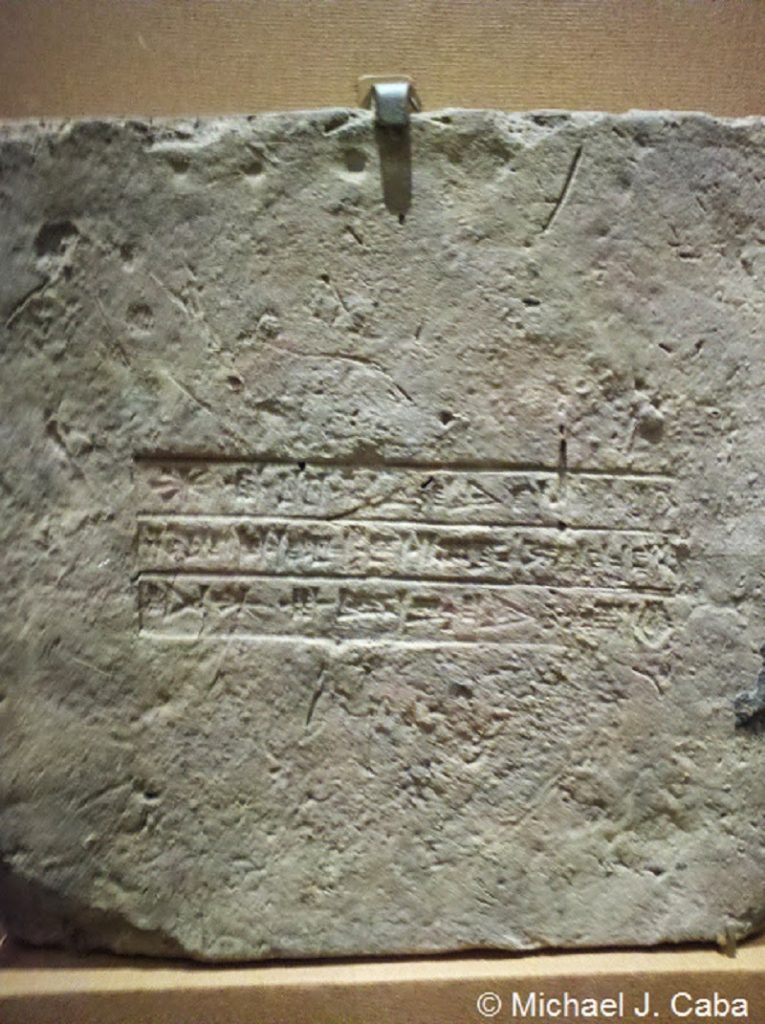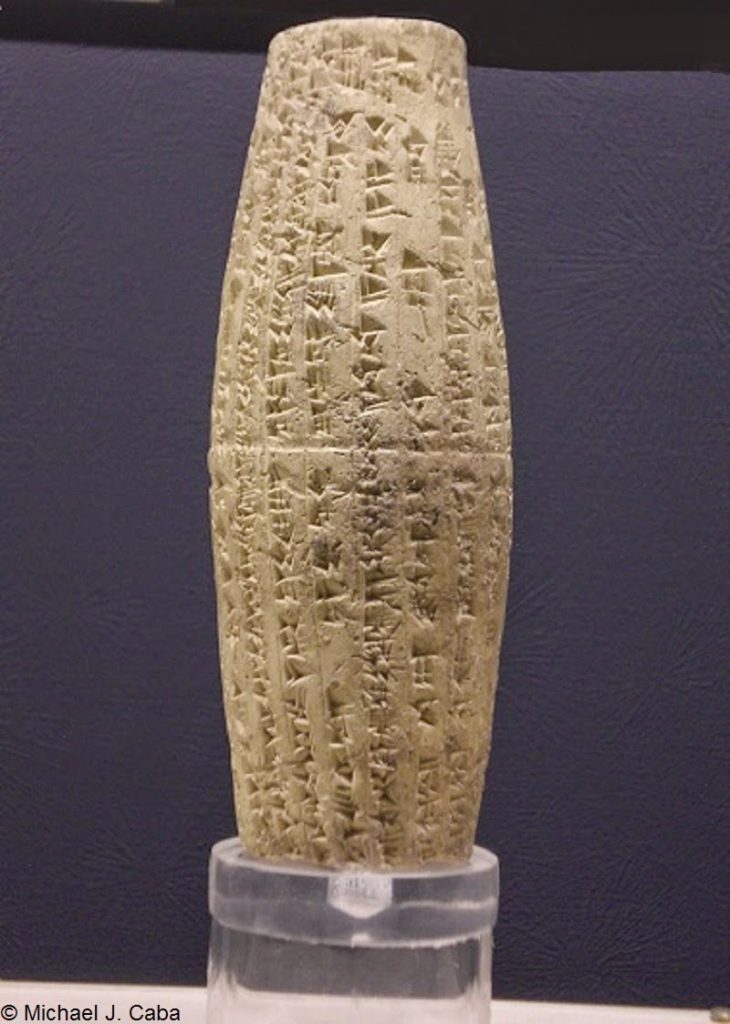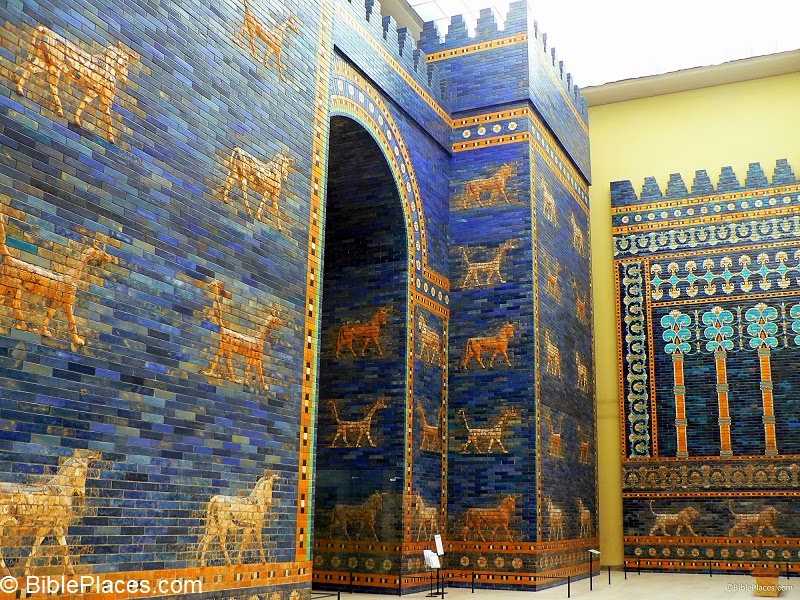 (Posted by Michael J. Caba)
(Posted by Michael J. Caba)
The ceramic brick to the left is inscribed in cuneiform with the name of Nebuchadnezzar II. Ancient kings often used inscribed bricks in their building projects. This one was originally made in c. 604-562 BC and was found in the ruins of ancient Babylon during excavations in 1927. It reads, “Nebuchadnezzar, King of Babylon, Guardian of the temples of Esagila and Ezida, Firstborn son of Nabopolasser, king of Babylon.” It is shown here in The Metropolitan Museum of Art in New York while on loan from Staatliche Museen zu Berlin, Vorderasiatisches Museum, Berlin.

The cylinder to the
right reads, in part, “Nebuchadnezzar, King of Babylon, the restorer of the temples: Esogil and Ezida, the first-born of Nabopolasser, King of Babylon, am I.” It was inscribed using cuneiform lettering in 604 BC and was discovered in a temple wall in Babylonia at the location of its original burial. It is made of terracotta and is currently located in the Rosicrucian Egyptian Museum, San Jose, CA.
The photo to the left shows the Ishtar gate as it now sits in the Museum of the Ancient Near East, Pergamum Museum, Berlin. Originally constructed in ancient Babylon during the reign of Nebuchadnezzar II, it is covered with colorful glazed titles that depict bulls and dragons. It was uncovered by German archaeologists, along with other spectacular finds, during a 14-year period beginning in 1899. The reconstructed gate is approximately 48 feet in height and 51 feet in width.
For those interested in Biblical Studies, Nebuchadnezzar II is mentioned some 90 times in the Bible in a variety of different contexts (e.g., Ezra 1:7).
For information on similar artifacts related to the Bible, see Bible and Archaeology – Online Museum.
(Photos: Michael J. Caba and BiblePlaces.com. Significant resources for further study: The Context of Scripture, volume 2, page 308-10; Lost Treasures of the Bible, by Fant and Reddish, pages 199-205.)
